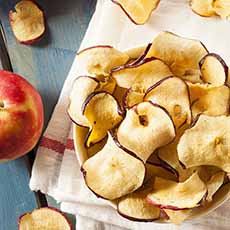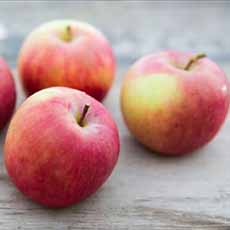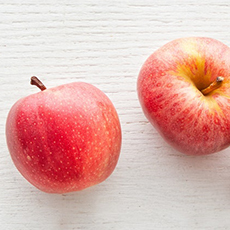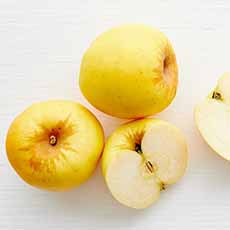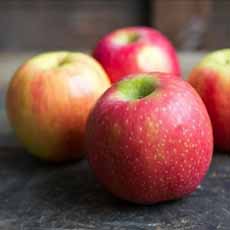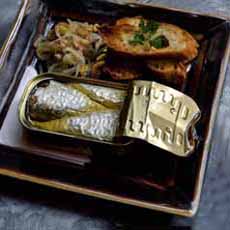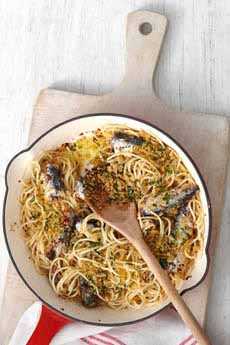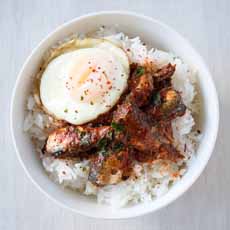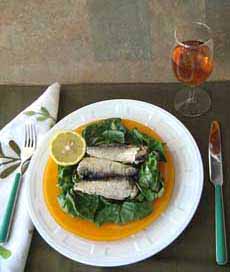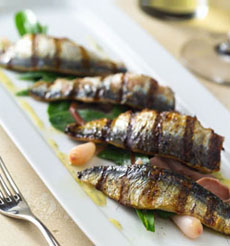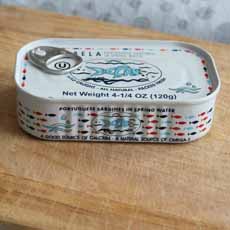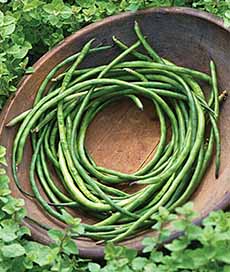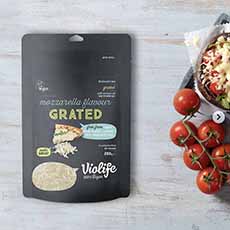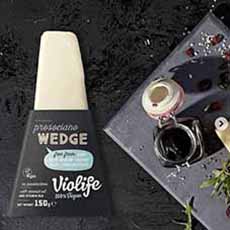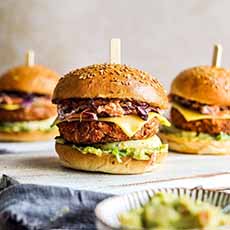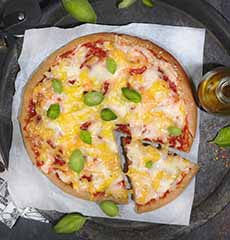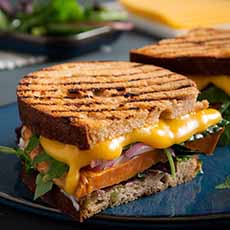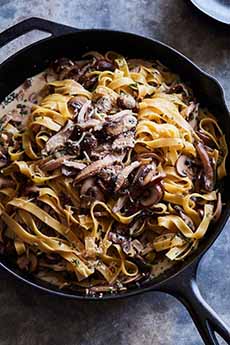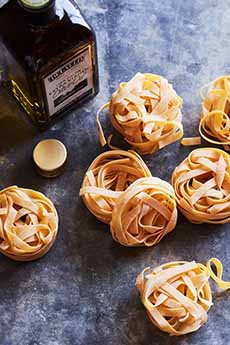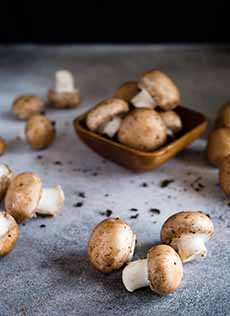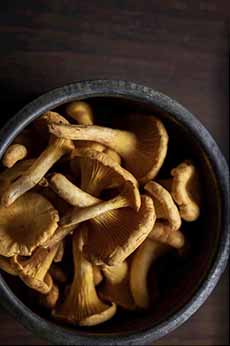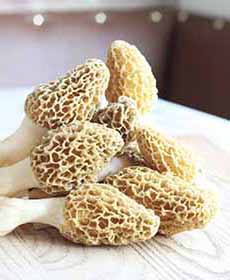|
For World Vegetarian Day, October 1st, it’s easy to convert some of some favorite dishes from meat to meatless.
Melissa’s Produce took on a Chinese-American favorite, Kung Pao Chicken (photo #6).
Goodbye chicken, hello veggies:
Using spaghettini (thin spaghetti) as a base, with a colorful Chinese vegetables and Kung Pao spices, they created Kung Pao Vegetables (photo #1).
The recipe contains Chinese eggplant, green long beans and baby bok choy, with cubed tofu replacing the chicken.
There are roasted peanuts for crunch and extra protein and flavor.
A word about the tofu: In this recipe, Melissa’s used its Hawaiian Style Tofu Squares, tofu that is pre-fried to use right out of the package.
It’s great stuff, but you will want to pan-fry your tofu in advance. Or, you may prefer to stir in regular tofu, as is.
Thanks to Melissa’s for this delicious recipe. It’s actually vegan (here’s the difference between vegan and vegetarian).
RECIPE: KUNG PAO VEGETABLES
Because there are no noodles in this dish, no side dish of rice is specified.
Ingredients For 4 Servings
For The Sauce
3/4 cups vegetable broth
2 teaspoons soy or tamari sauce
2 teaspoons rice vinegar
1-1/2 tablespoons maple syrup or honey
1 teaspoon sriracha† sauce
1-1/2 tablespoons cornstarch
For the Main Dish
3 cups chinese eggplant, 1/2″ cubes (photo #3)
3 cups chinese long beans, 1″ pieces
2 tablespoons vegetable oil
1 tablespoons sesame oil
2 dried red chiles
2 tablespoons ginger minced
1/2 cup green onions, white part only, diced
1/2 cup green onions, green part only, diced
1-1/2 cups rainbow carrots, 1/2″ pieces
1-1/2 cups red bell pepper, 1/2″ pieces
2 tablespoons minced garlic
3 cups baby bok choy, 1″ cubes
1 package Hawaiian style tofu (or substitute), 1/2″ cubes (photo #5)
1-1/2 cups dry roasted peanuts
1 package spaghettini (photo #6—substitute spaghetti or angel hair)
Salt and pepper to taste
Preparation
1. MAKE the sauce. Combine the sauce ingredients, whisk together and set aside
2. HEAT the eggplant and long beans in a steamer about 5 minutes until tender. Remove and set aside.
3. COOK the spaghettini according to package instructions. While the spaghetti is cooking, prepare the vegetables as follows:
4. HEAT the oil in a wok or large sauté pan on medium heat. When the oil sizzles, add the dried red chiles and white part of the green onions. Stir-fry for 2 minutes.
5. ADD the ginger, red bell pepper and carrots and sauté 2-3 minutes.
6. ADD the garlic and bok choy and sauté 2 minutes.
7. ADD the steamed eggplant and long beans, along with the tofu and sauté 1-2 minutes.
8. ADD in the sauce mixture and stir to combine. Continue cooking until sauce thickens.
9. ADD in the peanuts and green onions and cook another minute. Taste and add salt and pepper as desired.
10. DRAIN the spaghettini and then transfer to a large serving bowl. Pour the vegetables and sauce over the spaghettini. Toss to combine, and serve.
THE HISTORY OF KUNG PAO CHICKEN
The legend is that that Kung Pao chicken (photo #7) was created by Ding Baozhen (1820–1886), a governor of the Sichuan province of southwestern China, during the Qing Dynasty (1644-1912).
He was very interested in cooking, and chicken, peanuts and spicy flavors.
He combined diced chicken, red chiles and peanuts into a popular family recipe.
Another version of the story is that he first had the dish at someone else’s home, and liked it so much that he asked for the recipe (which had spicy Sichuan peppercorns instead of chiles). He began serving it to his own family and guests.
Others must have asked for the recipe*, too, because as time passed, it transcended the Ding family dining room an reached an enthusiastic regional (Sichuan), the national, and then world—audience.
While it traveled around the other provinces of China, each with their own regional spin.
Kung Pao chicken became a staple of Westernized Chinese cuisine.
Thille here is an authentic Sichuan version of the recipe.
As for the name, Kung Pao is actually the honorable official title. Ding was a good governor, so the Qing government bestowed upon him the title “Kung Pao,” which translates to “an officer who tutors the crown prince” [source].
Did Ding Baozhen (1820–1886) know Zuo Zongtang, General Tso (1812-1885)?
It’s a fanciful “who knows?” They both lived at the same time during the Qing Dynasty.
But General Tso did not create the dish named after him.
A chef named Peng Chang-kuei created General Tso’s Chicken (photo #8), in the 1950s.
Peng was a banquet chef for Chinese Nationalists. He fled to Taiwan with them after their 1949 defeat by Mao Zedong’s Communists.
It was there that he came up with the idea for General Tso’s Chicken, and when he immigrated to New York in 1973 he brought the dish with him.
It’s a pretty simple dish: boneless pieces of chicken, breaded and deep-fried, with a sweet-and-hot sauce.
The sauce is made from soy sauce, rice wine, rice-wine vinegar, sugar, cornstarch, whole dried red chili peppers and garlic.
It is often served with broccoli florets.
Why is the dish named for General Zongtang?
Chef Peng came from the same town as Zuo Zongtang, and named the dish after the hometown hero.
We actually had the dish, made by Peng’s own hand‡, in his New York City restaurant, Uncle Peng’s Hunan Yuan. It introduced New York, to Hunanese food.
Peng died in 2016, leaving a culinary legacy.
________________
*Truth to tell, it’s an easy enough recipe to figure out.
†A substitute for sriracha is sambal oelek, an an Indonesian chile sauce or paste (sriracha is from Thailand); or another hot chile paste.
Crushed red chile flakes or even cayenne pepper can be used in a pinch, although they are not as hot; and dried spices do they have the same thick consistency as sriracha.
Here’s more about sambal olek.
‡More accurately, our General Tso’s chicken was cooked by whomever was at the wok at Uncle Peng’s Hunan Yuan that night.
|
